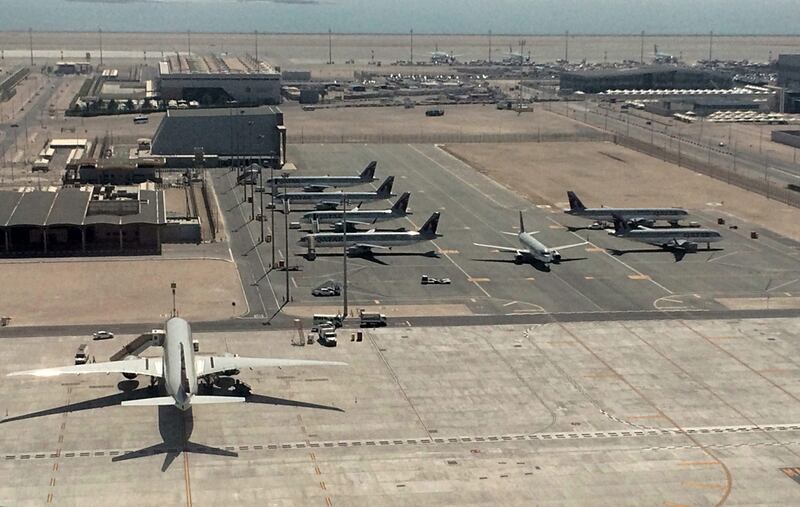The decision by Saudi Arabia, Bahrain, Egypt and the UAE to suspend ties with Qatar will severely hit Qatar Airways, the state-owned carrier that has risen to be considered among the best airlines in the world.
Already, air travel between Qatar and these four countries has stopped, resulting in the grounding of at least 50 daily flights. Doha’s airport has been thrown into chaos, and passengers have been stranded.
Saudi Arabia and the UAE are the two largest markets for Qatar Airways. The loss of this traffic and the forced idling of aircraft could wipe out up to 30 per cent of revenue, as estimated by the consulting firm Frost & Sullivan.
But an even bigger impact would be the loss of airspace over these countries. Qatar Airways has emerged as a popular airline for travellers from Asia heading to the West or Africa, but if its planes are denied overflight privileges by these four countries, they will be forced to find longer or alternative routes towards Europe, Africa and the US.
Saudi Arabia closed off its airspace to Qatar Airways on Monday. Egypt and the UAE followed suit, and Bahrain has permitted just one route through its airspace, according to aviation tracking website Flightradar24. This route, which represents Qatar Airways’ sole exit to the outside world, is guaranteed to grow incredibly congested.

Yemen, Libya and the Maldives have also joined Saudi Arabia and Egypt in entirely banning Qatar Airways from their airspace. But it is primarily the restrictions by Saudi Arabia and Bahrain that will worry airline executives.
The restrictions affect Qatar Airways severely because of its hub-and-spoke model, which make it reliant on transfer traffic rather than home markets, said John Strickland, who runs JLS Consulting, a London-based aviation consultancy.
"The bans on UAE and Saudi local flights cut off two key point-to-point markets and important sources of transfer traffic," Mr Strickland told The National. "Overflight bans make operating to a number of destinations more complex, as well as adding time and cost to journeys."
“This also affects the hub model, as it will mean that a number of schedule timings will not be able to be maintained, critical for transfer passengers.”
With its 197 aircraft, Qatar Airways flies to more than 150 destinations around the world. Roughly 30 per cent of its seats are booked for travel to Europe and the North America, 8 per cent to Africa (excluding Egypt), and 31 per cent to Asia (excluding the UAE, Bahrain and Saudi Arabia).
The airline’s usual route westward over Saudi Arabia and eastward over the Arabian Gulf is now cut off. The primary alternate route — over Iran — is restricted, because it will almost invariably involve flying through Bahraini airspace.

Handout graphic provided by Flight Radar shows how Qatar Airways flights are managing bans on flights through the airspace of Bahrain, Saudi Arabia, UAE, & Egypt, by flying over Iranian airspace. Flight Radar via AP
“It’s a severe issue for Qatar Airways,” Gabriel Tilmann, executive chairman of the International Pilot Training Association, said. The single route through Bahraini airspace “will be used primarily to fly into Iranian airspace and then north-west” towards Europe or east into Asia, he added.
The lengthier route, Mr Tilmann said, will add 30 to 50 minutes to flying time. “Going west to North Africa would be a much longer delay, as Saudi Arabia and Egypt have to be circumvented,” he added.
Qatar Airways did not respond to a request for comment.
Part of the reason the airline has been plunged into uncertainty is the unusual break-up of airspace in the region.
Qatari airspace is encircled almost wholly by Bahraini airspace, with the only other exits through Saudi Arabia to the south and through UAE airspace to the east. As a result, Qatar has no immediate access to international airspace or to Iranian airspace.
This is largely a legacy of history, Mr Tilmann said.
“Bahrain was the first in the region [to launch an airline] with Gulf Air, therefore it was ‘their’ airspace to control,” Mr Tilmann said. “Doha has been trying for a long time to get the airspace better organised. The whole region should be controlled by one organisation,” such as a neutral regional bloc, he explained.
“But that has been an ongoing discussion.”

In theory, Qatar Airways’ rights are protected by the International Air Services Transit Agreement of 1945, a multilateral treaty that permits overflights. Saudi Arabia is not a signatory to the treaty, but Bahrain, the UAE and Egypt are.
But the treaty’s rules are easily broken, with those who break it facing few consequences.
Countries routinely cite geopolitical or security reasons to selectively shut down their airspace.
The International Civil Aviation Organisation, a UN agency, has a weak dispute resolution mechanism, which offers little hope for Qatar Airways.
The airline has little leverage in retaliating as well, since closing off Qatari airspace to flights originating from Saudi Arabia, Bahrain and the UAE will have little impact on their flight paths.
The bans will thus effectively ground Qatar Airways, a report from the Centre for Aviation said. But Qatar has one hope, the report added: “It is difficult to see the ban persisting for long. There can be few winners from it.”
ssubramanian@thenational.ae





